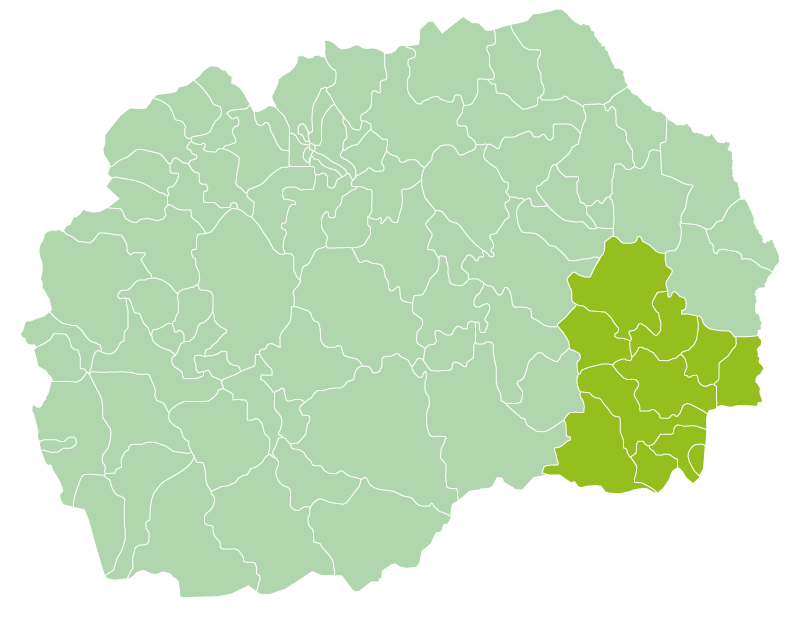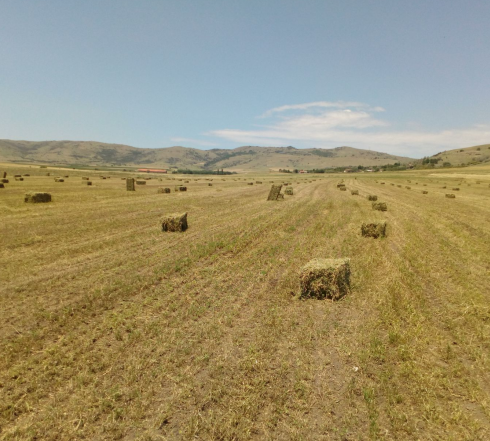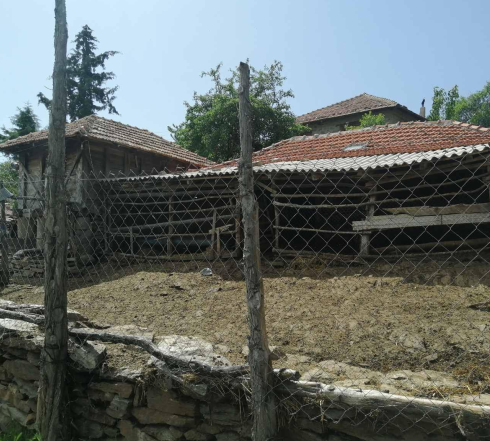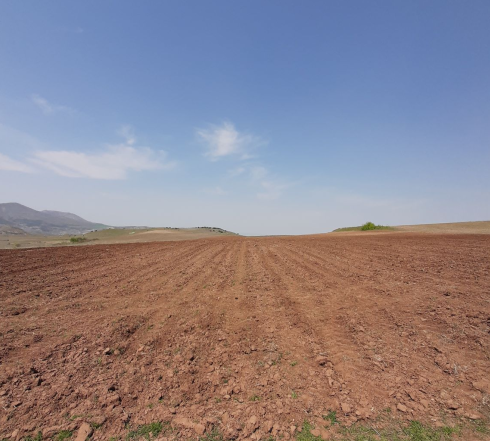| PILLAR | STRENGTHS | WEAKNESSES | OPPORTUNITIES | THREATS |
| 1. Availability of public and other services | S1.01 People feel safe and secure in the area they live in (57%) | W1.01 Lack of adequate day care facilities in the area (61%) | O1.01 Good internet/telecom connectivity (4G/5G /fiber) is available throughout the country (73%) | T1.01 Almost no investments for construction of retirement homes and centres for early child development (LR) | |
| S1.02 There are sufficient possibilities enabling mobility to the main city in the region (53%) | W1.02 Limited access to good medical | O1.02 Existing policy measures aimed at making the health care system more accessible to the rural population (LR) | T1.02 The corona crisis may limit the available medical capacities even further | |
| (primary care) services (55%) | |
| | W1.03 There are no opportunities for higher or professional education and lifelong learning (50%) | O1.03 Existing government efforts to promote higher education of the rural youth, by introducing dispersed high education studies (LR) | | |
| S1.03 Good intra-regional public transportation is available (48%) | W1.04 There is not sufficient public transportation to services (hospital of reference /specialized health care premises, schools, universities) – (46%) | O1.04 Policy measures for financial support for rural infrastructure (LR) | | |
| S1.04 Satisfactory accessibility to good primary and secondary schools (42%) | W1.05 There is no adequate public provision of online e-health, e-daycare and/or e-learning | 01.05 High policy awareness for the importance of education and support of education (subsidizing) enabling development activity (LR) | | |
| Services (44%) | |
| | W1.06 The connections between rural and urban areas (e.g. airports, train connection) are not sufficient (43%) | O1.06 Increased availability of free e-learning alternatives (LR) | | |
| | W1.07 There is not enough support for teleworking opportunities in the area (43%) | O1.07 Increased investments in refurbishment and modernization of primary and secondary schools (LR) | | |
| 2. Recreation / social activities | S2.01 There are quality commercial services such as restaurants, shops, car maintenance, etc. (54%) | W2.01 There are not enough and adequate spaces to allow young people to meet (73%) | | | |
| S2.02 There are adequate housing opportunities (48%) | W2.02 Extracurricular activities (e.g.: music, dance, arts) for children are not accessible (68%) | | | |
| | W2.03 There are not enough recreational activities for young people (67%) | | | |
| | W2.04 People disagree that there are plenty of good and different recreational activities (60%) | | | |
| | W2.05 Elderly people are not offered activities and a space where to meet (53%) | | | |
| 3. Living condition, quality of life and standard of living | S3.01 There is basic infrastructure for normal housing (electricity, water supply and sewage system) (60%) | W3.01 People are not highly aware of the usage of renewable energy for business purposes and in everyday life (55%) | O3.01 Available power supply in rural areas (a well-developed transmission and distribution network) (LR) | T3.01 General population including rural are scared of the side effects from upcoming digital infrastructure (5G) | |
| |
| |
| S3.02 People are proud of living in the area they live in (56%) | W3.02 Living conditions in villages and rural areas (except in tourist areas) are seen as less attractive than in urban areas (LR) | O3.02 The climate conditions are favourable for usage of renewable sources of energy in the direction of providing energy for the agricultural sector (LR) | T3.02 Air pollution in the country is an issue, particularly in winter (LR) | |
| S3.03 There are high living conditions (family development, air quality, accessibility) (46%) | W3.03 There are differences in social economic statuses between people in rural areas and the political divide is obvious and very intensive | | | |
| S3.04 There are no problems of integration with some population in the territory (minorities, new comers….) (42%) | W3.04 Weak activity or non–existence of regional or local institutions competent for rural development (LR) | | | |
| 4. Demographic & human capital | | W4.01 There are not enough young people in the area (69%) | | T4.01 Severe ‘aging population syndrome’ present | |
| |
| | W4.02 Our community and voluntary sectors are not well developed and do not address the social needs of our region and create opportunities (66%) | O4.01 Existing initiatives (e.g. Rural Development Network) aimed to mobilise rural communities as agents of local development and as participants in rural policy (LR) | T4.02 Young people today are more mobile and less emotionally related to the land and country-side (LR) | |
| | W4.03 There are not enough babies born in the area (65%) | | | |
| | W4.04 There are not enough working people to support the dependent population (i.e. children, elderly) (56%) | | | |
| | W4.05 The demographic structure of the working population is not in accordance with the needs of businesses in the rural area, including agribusiness (49%) | 04.02 Existing policy measures to attract young people to work and live in rural areas (LR) | T4.03 The interest among young people for programs for financial support of young farmers is very small (LR) | |
| | W4.06The education structure of the working population is not in accordance with the needs of businesses in the rural area, including agribusiness (44%) - High long-term unemployment found in rural areas is related to the poor qualification structure of the unemployed (LR) | | T4.04 Insufficient or total lack of education of people in rural areas - Low rates of enrolled and graduated students (LR) | |
| | W4.07 It is not possible to find opportunities to develop family plans (43%) | | | |
| S4.01 The difference between men and women is minimal and has no influence on the demographic imbalance (LR) | W4.08 There are not enough women in the area (42%) | | | |
| |
| 5. Business, economy & innovation | S5.01 The area favours eco-firms and sustainable business (circular economy) (71%) | W5.01 The area is not good for new, innovative companies and creative professionals (48%) - Lack of mature business ideas and entrepreneurial skills and knowledge; saturation of sectors that shops, restaurants, communal services) (LR) require low start-up capital (small retail | O5.01 The country has a good climate potential for the development of agriculture; The large number of sunny days offers excellent conditions for the development of gardening, fruit growing and vine growing (LR). | T5.01 There is a tendency for low investments in new technologies and modernisation of companies/ Enterprises in rural areas are predominantly labour intensive with a low level of technical and technological equipment | |
| S5.02 The area offers possibilities for sustainable agriculture and forestry (54%) | W5.02 Weak access to consultancy and extension services | O5.02 The Ministry of Economy via the Agency for promotion of SME supported the creation of a network of advisors and promoted voucher system of use of consultancy services (LR) | T5.02 Investments in agriculture are less attractive for banks due to lower profitability of investments, collateral problems, and so on. (LR | |
| |
| |
| | W5.03 There is not an adequate special taxation scheme to attract new businesses in the area (45%) | | | |
| S5.03 The area offers possibilities for sustainable tourism (cultural heritage, nature, sports, local food) (48%) | W5.04 Insufficient development of tourism attractions and facilities; Difficult access to tourism amenities, national parks and tourist sites; Lack of trained human resources; Lack of strategic planning and marketing of rural tourism resources and products (LR) | | T5.03 Persistently underdeveloped tourism in rural municipalities as a result of the lack of work experience and tourism related activities of rural population (LR) | |
| | W5.05 There are not enough possibilities for employment (40%) - Employment opportunities in rural areas are limited and dominated by agriculture as an economic sector (LR) | | T5.04 Low competitiveness of economic activities in rural areas (for example, agriculture, forestry, fishery, food sector, rural tourism, service industry) (LR) | |
| S5.04 There are good conditions for development of the agro-processing industry (42%) - Almost all of the food processing industry (except for meat processing and slaughterhouses) is located in rural areas (LR). | W5.06 In all regions the development of industry is constrained by the quality of road infrastructure and business related infrastructure and increasingly by the shortages of qualified labour (LR) | O5.03 There is great potential for export for agro-processing industry (LR) | | |
| S5.05 Available credit lines especially targeted to agribusiness, i.e. individual farmers, rural households, agricultural, agro-processing and agro-export SMEs (LR) | W5.07 Credit lines for agribusiness not favorable, they require a guaranty and the administrative procedures are complex. Mortgages in rural areas are very poorly valued by the banks | O5.04 The EU pre-enlargement support can partly overcome some financial constraints in rural areas for profitable businesses (LR) | T5.05 Substantial changes in rural capital markets are less likely during economic recession and financial constraints (related to corona crisis) (LR) | |
| S5.06 The area offers good opportunities for start-ups and creating new businesses (42%) | W5.08 Inadequate coordination of program and activities directed towards different economic sectors in rural areas (LR) | | | |
| | W5.09 There is no institutional support for eco-companies, companies with sustainable business (organic production) (47%) - Support for organic production is very limited given the potentials and possibilities provided by EU policy; Lack of seasonal labour; Lack of own capital and access to financial resources; Weak level of agro-food integration; Low level of integration of research in the development of agriculture (LR) | O5.05 Macedonian agriculture is traditional extensive agriculture, which is main precondition for development of organic production (LR); Organic agricultural production in Republic of Macedonia is one of the fastest growing agribusiness sectors (LR) | T5.06 Regarding organic production, there is a lack of organization, cooperation, it is necessary to create a policy or strategy (LR) | |
| |
| 6. Social and cultural aspects of rural areas | S6.01 Women and men equally participate in decision making and working life (45%) - Rural women have very low levels of decision-making in the family and leadership of family businesses, especially in the rural areas with predominantly Muslim population (LR) | W6.01 There is a lack of lively communities and citizen-driven local activities (59%) | | | |
| S6.02 There are good opportunities for women to participate in various social activities and working life in the area (40%) | W6.02 There are no good opportunities for young people to participate in decision making (53%) | | | |
| | W6.03 Loneliness and isolation affect many people in the area (48%) | | | |
| 7. Environment & Biodiversity | S7.01 The area has wide open landscapes or other beautiful nature scenery (87%) | W7.01 There are no efficient waste management practices by individuals and the business sector (64%) - In rural areas and around villages there are numerous unregulated/unorganized waste disposal sites (LR); Very low percentage of the populations in rural areas receive regular collection services for solid waste (LR) | O7.01 Large areas of agricultural land not polluted and not intensively cultivated (LR) | T7.01 General practice is collection of non-separated communal and non-hazardous industrial waste as well as non-hazardous and hazardous non-separated waste fractions (LR) | |
| |
| |
| S7.02 Nature in the area is diverse (86%) - The diversity of natural resources is still on a relatively good level (LR) | W7.02 Cultivation practices in the area are not done in environmentally sound way (42%) | O7.02 Available human resources in the private and civil sector, which have some experience and knowledge in sustainable environment management (LR) | | |
| S7.03 High Nature Value Areas (i.e. Natura 2000, Natural and National Parks) are well valorised in the area (40% agree/ 39% disagree) | W7.03 Required development of the road infrastructure as most of the cultural heritage is located in outmost rural areas (LR) | O7.03 Increasing interest in cultural tourism on the market (LR) | | |
| - Currently, there are several rural settlements protected as monuments of culture and natural rarities (LR) | |
| S7.04 The cultural heritage is located in the rural areas and has the biggest development potential considering the diversity and quality of cultural and historical treasures and archaeological sites in the country (LR) | W7.04 Lack of professional staff with deeper knowledge and experience in biodiversity valorisation and protection (LR) | | | |
| |



